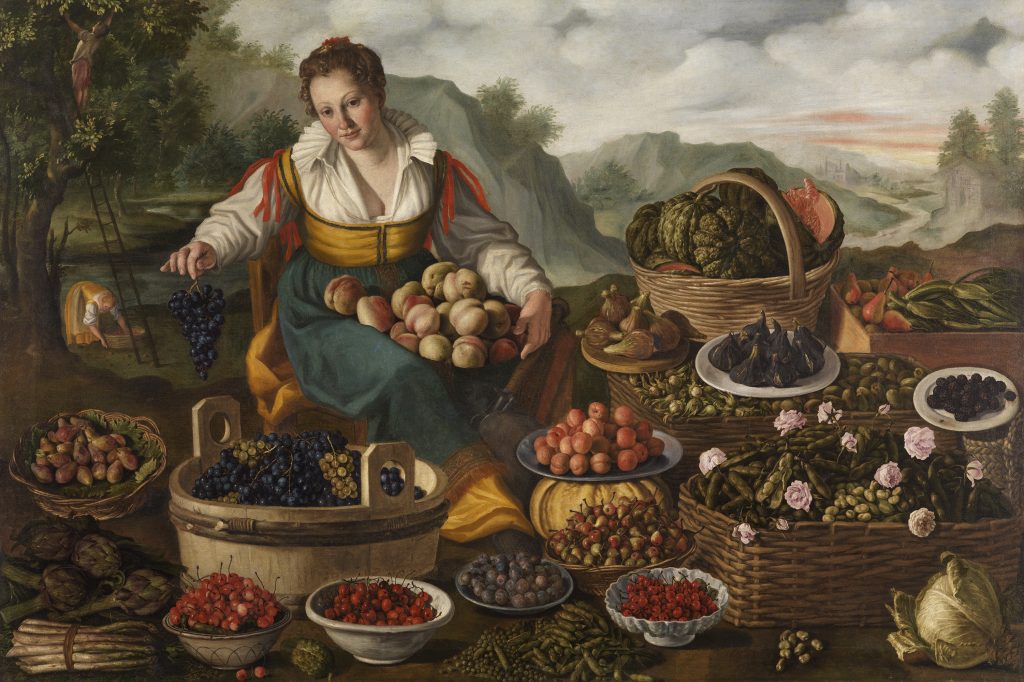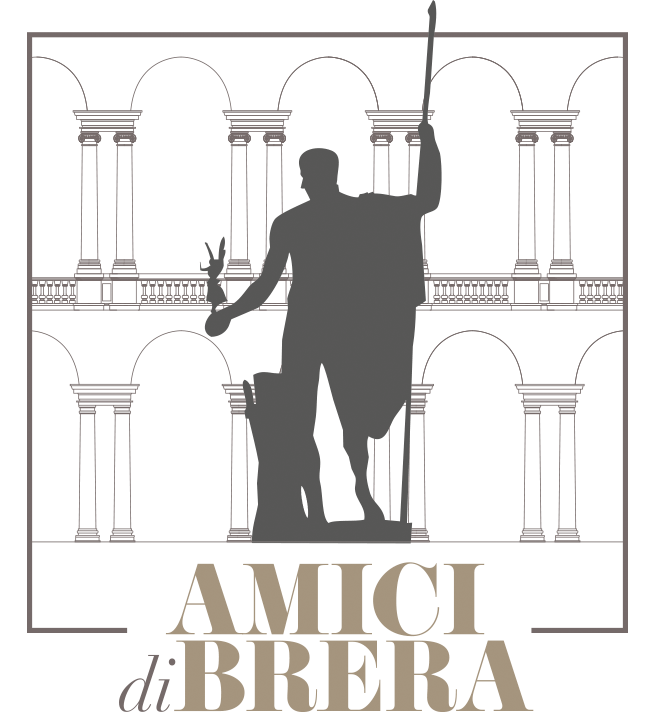VINCENZO CAMPI
(Cremona, 1536 – Cremona, 3 October 1591)
Fruit Seller
1578-81
Oil on canvas
143 x 213 cm

PAINTING
The Fruit Seller is part of a series by the Cremonese painter Vincenzo Campi that also includes Fishmongers, The Poultry Seller, and The Kitchen. Until the death of his wife, these paintings were hung in his home in Cremona. They were then purchased by the Hieronymite monks of St Sigismund, also in Cremona, who displayed them in the guest quarters of their Convent until the Napoleonic suppression of Italian religious orders in 1809, when they were transferred to the Pinacoteca di Brera.
Strongly influenced by coeval Flemish art and its pervasive market scenes, these canvases have been interpreted as allegories of the four elements (the Fruit Seller representing the Earth) or, more recently, as moralising messages related to the Catholic Counter-Reformation.
Because of their naturalism and the classificatory-scientific approach with which each element is depicted, these canvases represent one of Campi’s greatest achievements, as well as a landmark in the evolution of Lombard still life painting anticipating the independence of the genre.
BIOGRAPHY
Cremona, a borderland open to Venetian, Emilian, Milanese, and Mantuan influences, distinguished itself throughout the 16th century for its lively art scene. This was where the Campi family workshop was established and thrived, from the founder and father Galeazzo, to his sons Giulio, Antonio, and Vincenzo, the latter of whom learned the trade from his older brother. Vincenzo worked on sacred subjects, following the guidelines set by the Counter-Reformation of St Charles Borromeo, but also tackled secular themes endowed with an intense naturalism of northern inspiration, with occasional grotesque and allusive touches. His subjects are commoners, and his care for the truthfulness of every detail anticipates the emergence of still life painting as an independent genre.With his brother Antonio he decorated the vault of San Paolo Converso in Milan with spectacular frescos of his illusionistic perspectives. His St Matthew in the church of San Francesco in Pavia is a masterful lesson on the rendition of light that precedes that of the Milanese Caravaggio.

